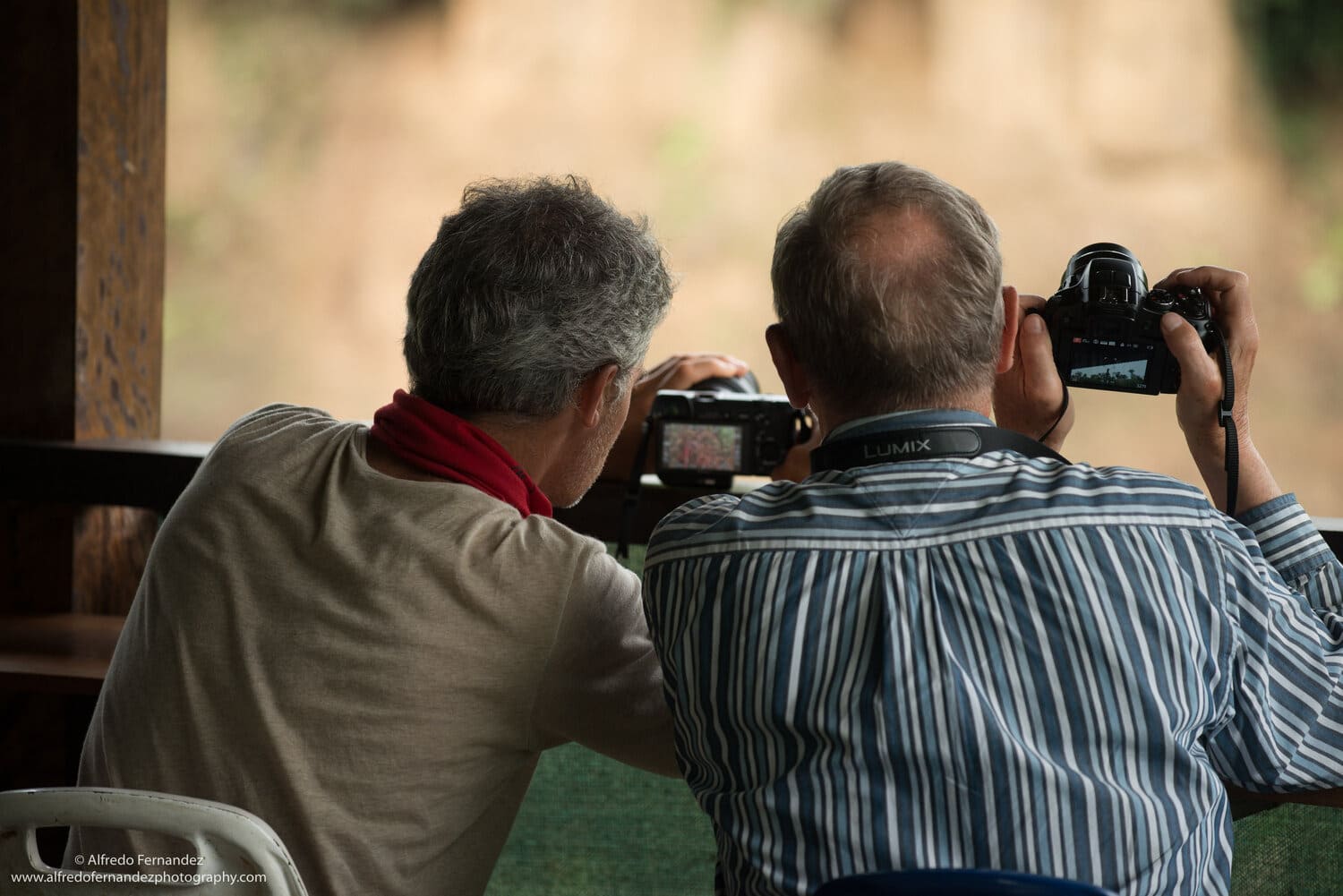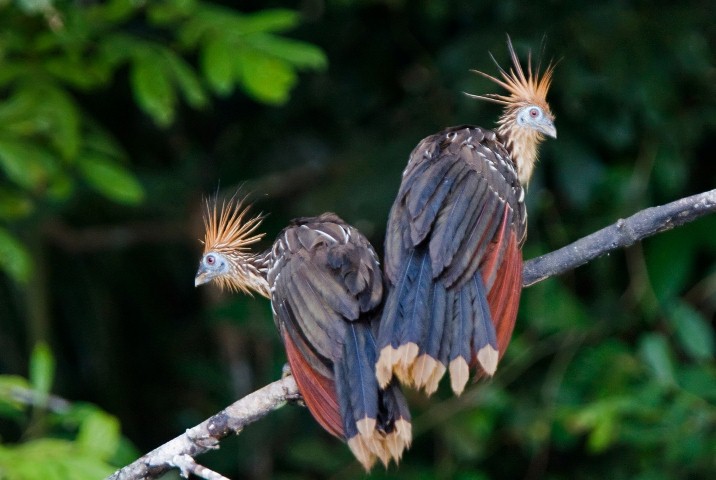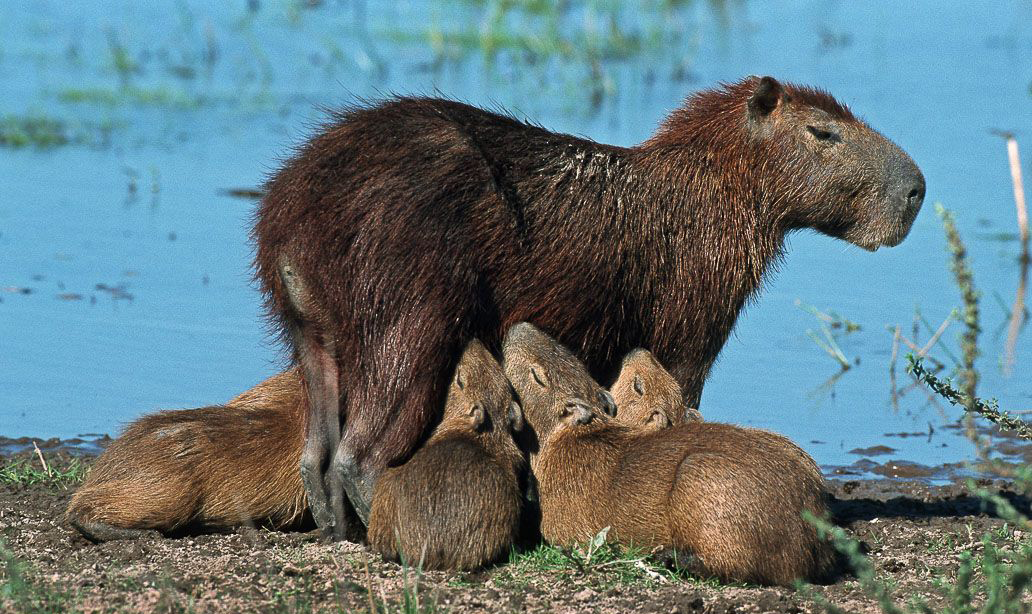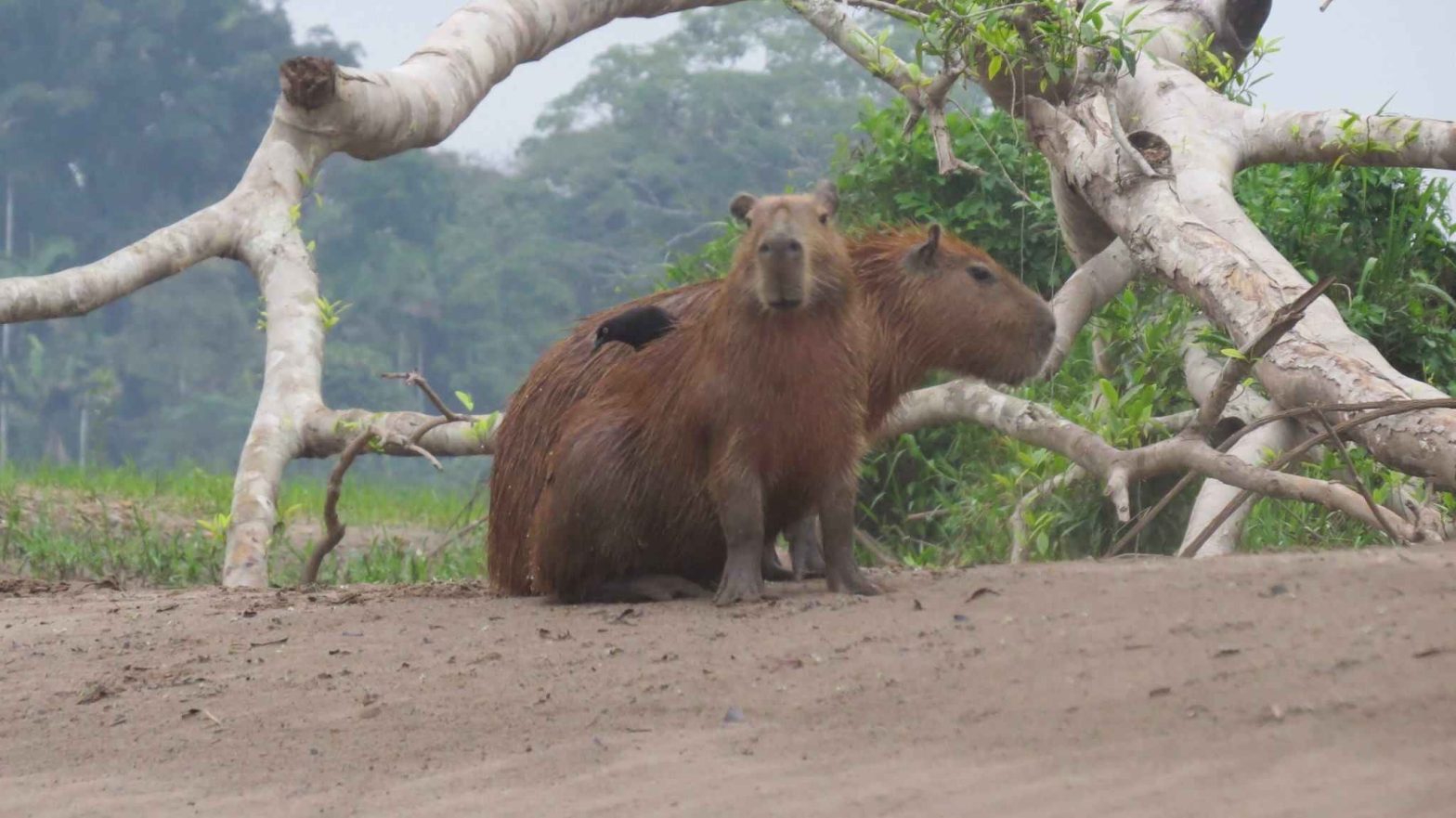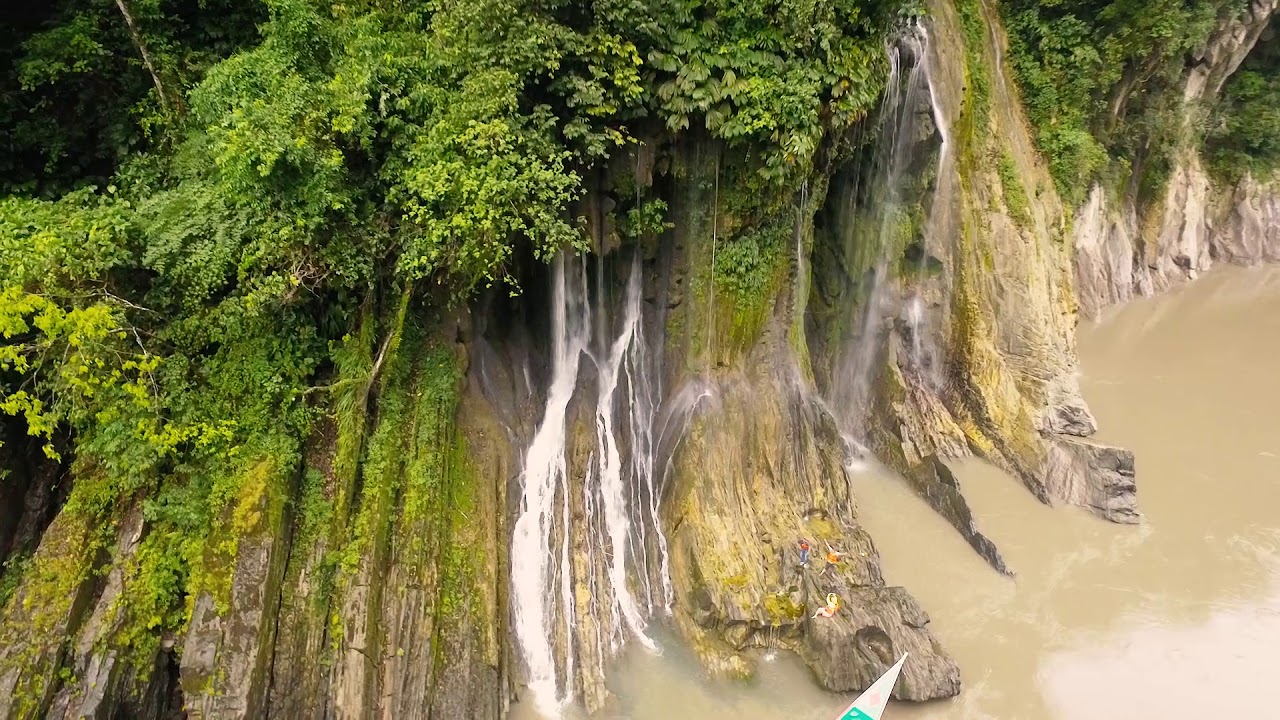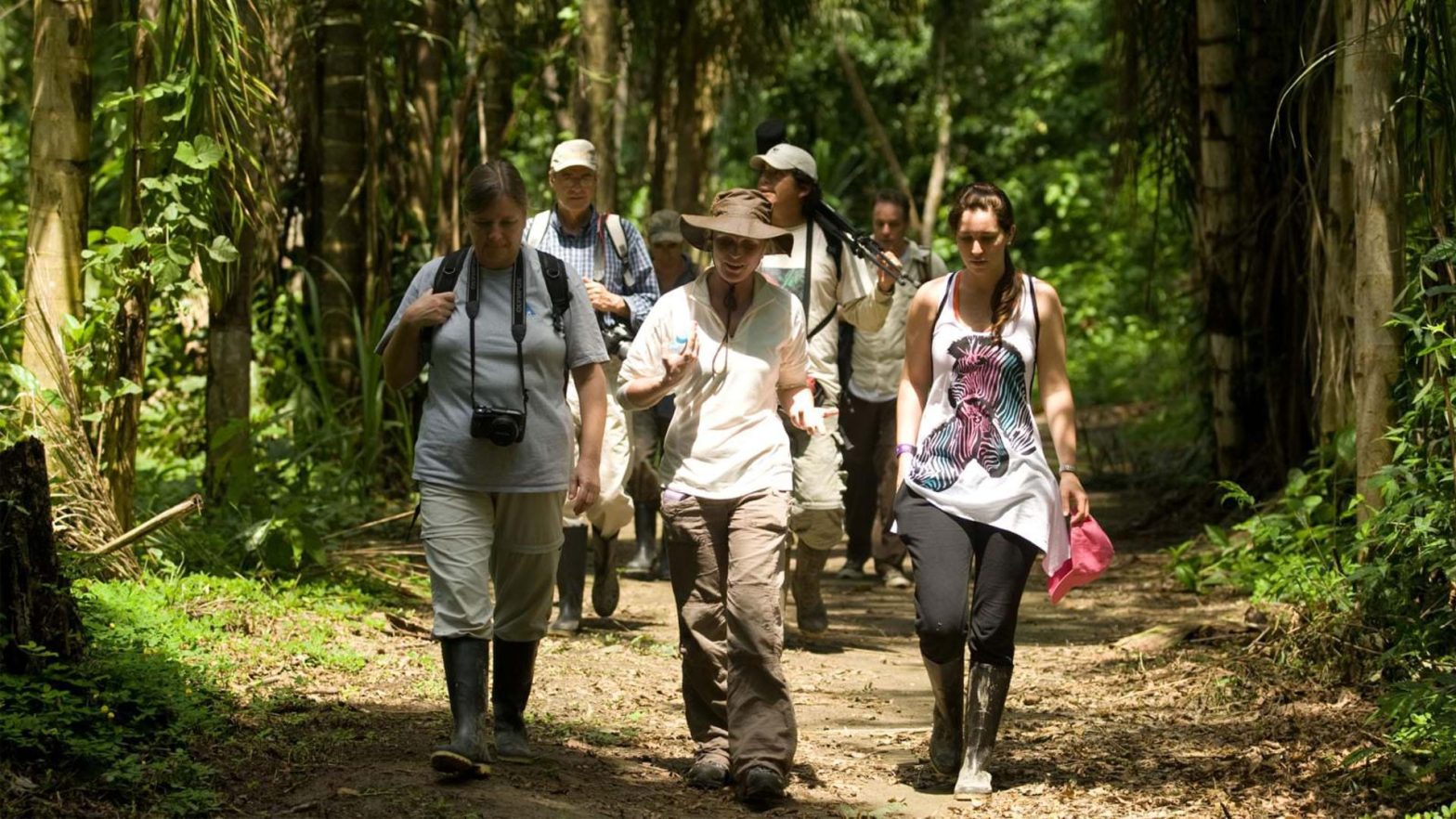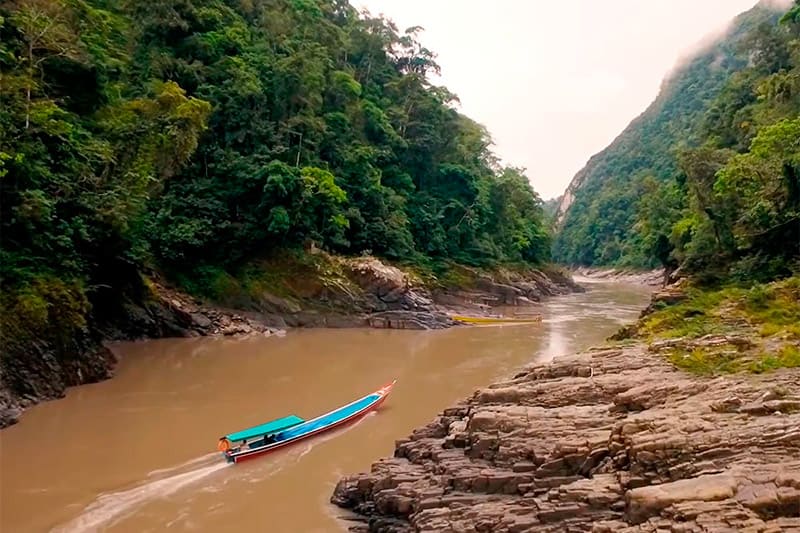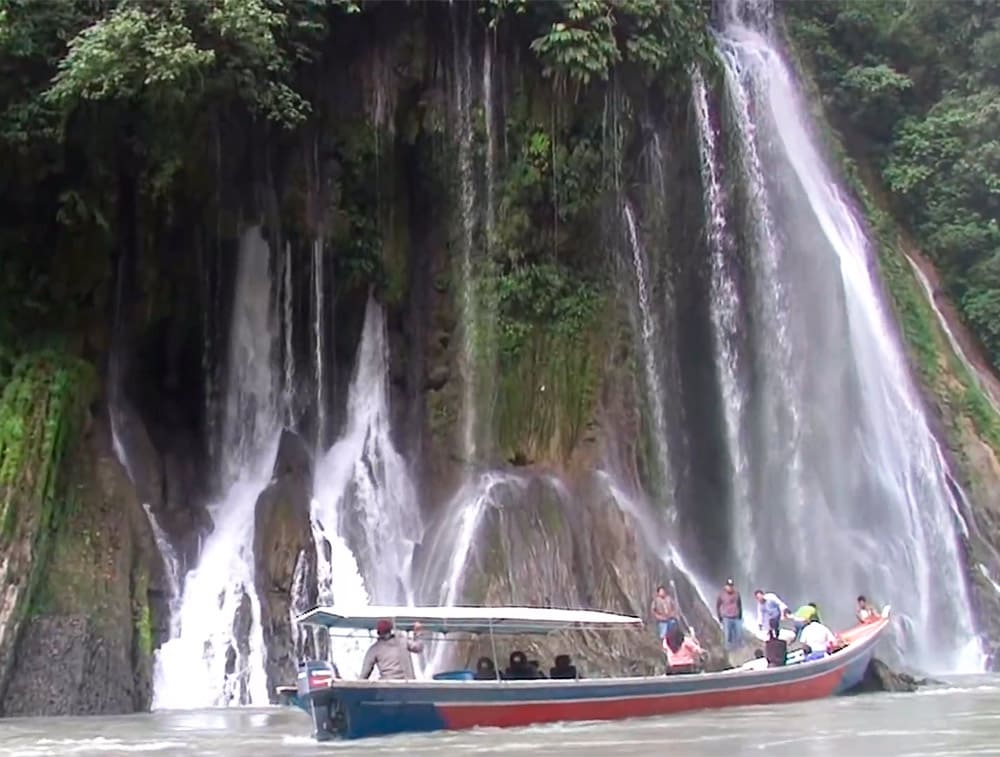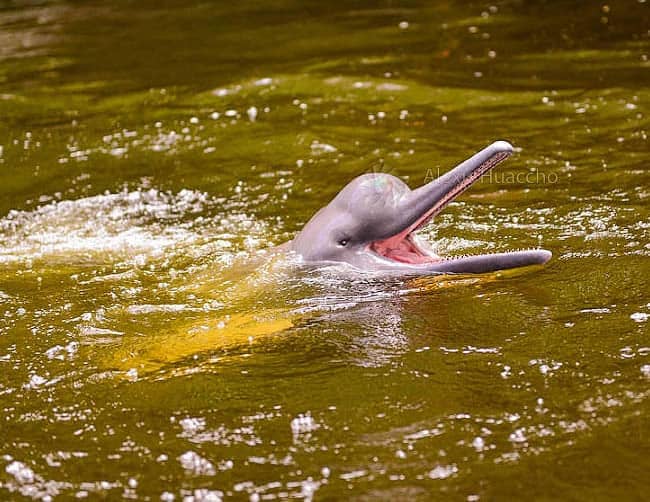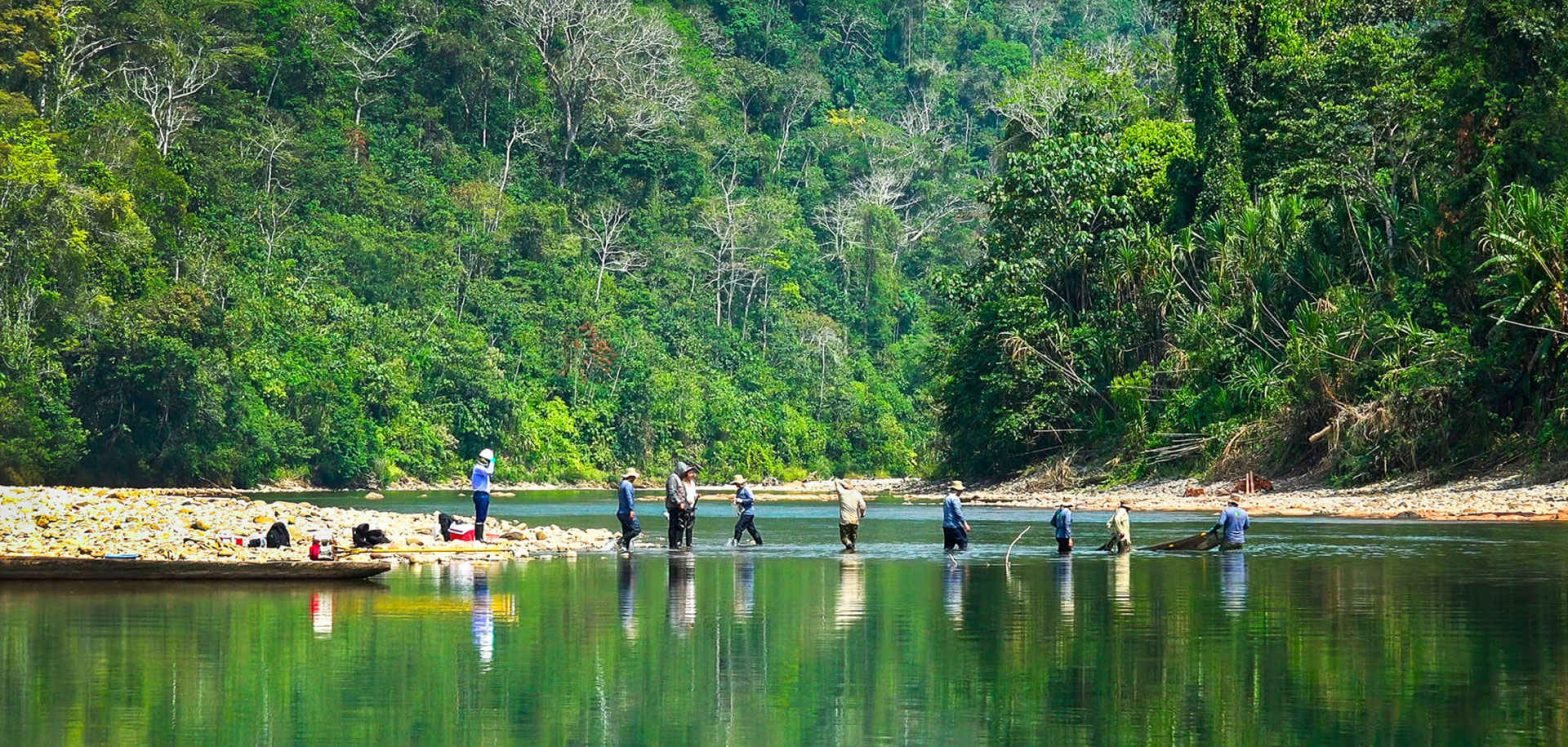PROTECTED AREAS: MANU NATIONAL PARK & MANU JUNGLE TOURS
Areas Manu National Park- Explore the Shores of Vilcanota – Manu Jungle Expeditions:
The Vilcanota River cuts through a dramatic canyon over 100 feet deep, its powerful waters crashing against the jagged cliffs.
Amidst a lush landscape of mosses, orchids, and epiphytes with translucent yellow leaves, the river roars as it
carves its way through this breathtaking terrain.
On a narrow ledge, we observe the river’s passage between these ancient cliffs, sculpted over centuries by relentless erosion.
Then, as if appearing from nowhere, two agile figures race upstream, moving effortlessly through the turbulent waters.
These are the torrent ducks (Merganetta armata), remarkable birds perfectly adapted to navigate the fierce currents of mountain streams. Manu Jungle Trips
Found in the wild, fast-flowing rivers at elevations above 1,000 meters, these ducks thrive in unpolluted waters.
Their incredible swimming and diving abilities enable them to access a rich supply of aquatic insects and larvae, undisturbed by competitors.
In the same habitat, the smaller dipper (Cinclus leucocephalus), a tiny black-and-white bird, also hunts for underwater food, demonstrating a similar talent for swimming.
As we leave the river behind and continue along the shore, the vibrant world of the high jungle reveals itself.
Fuchsia-colored flowers attract hungry hummingbirds, whose rapid movements pollinate the blossoms with pollen attached to their foreheads.
Nearby, emerald beetles seem to struggle to navigate through the dense floral labyrinth, while the forest floor
teems with colorful butterflies drawn to overripe fruit.
The sight of caterpillars with bizarre, otherworldly appearances adds to the surreal beauty of this ecosystem.Manu Jungle Trips
Flora and Fauna of Areas Manu National Park .
The high jungle is also home to elusive creatures like the Andean bear (or spectacled bear), a solitary, vegetarian species that thrives in the cloud forests.
We might also encounter the pudú (Pudu mephistopheles), a miniature deer no taller than a foot, which roams in
search of buds and fallen vegetation.
As we venture further into the forest, the chorus of bird songs fills the air, their calls resonating through the humid, dense atmosphere.
The sanctuary of Machu Picchu, part of this protected region, is home to over 300 species of birds, including both
massive condors and tiny, vibrant tanagers.
The region’s abundant flora supports a dazzling array of hummingbirds, each with specialized beaks adapted to
pollinate different species of flowers.
Some of these birds are so small that they seem to hover like insects, while others are larger than the flowers they feed from.
In the trees, pisonay and qeuña trees stand tall, their branches filled with bright red flowers, while mosses, lichens,
and bromeliads give the trees an appearance as though they are draped in a green, damp coat.
For botanists, this lush environment is a living museum, with plant species racing to claim every inch of space in the canopy. Manu Jungle Trips
Nightfall in Manu Park:
As night falls, the stars above appear more vivid than in any other place, their brilliance uninterrupted by city lights.
The only sounds that compete with the night sky are the gentle rustling of eucalyptus trees and the occasional call
of an animal in the distance.
The soft glow of the moon illuminates the river, guiding our way as we prepare for an early morning adventure in
search of one of the park’s most iconic creatures: the Cock of the Rock (Rupicola peruviana).
This stunning bird is known for its dramatic courtship display, where males compete for the attention of females in
a breathtaking spectacle of vibrant colors and complex behaviors.
Witnessing this ritual is a highlight of any visit to Manu, showcasing the unique and intricate natural processes of the cloud forest. Manu Jungle Trips
Machu Picchu Historic Sanctuary:
Machu Picchu, established as a protected area on January 8, 1981, spans 32,592 hectares of the Sacred Valley of the Incas.
While most travelers know it for the iconic Inca citadel, the Sanctuary also encompasses 34 archaeological sites,
connected by the famed Inca Trail.Manu Jungle Trips
This region is not just an archaeological marvel; it is a natural paradise, teeming with diverse wildlife, including
the ucumari Andean bear, the quetzal, and the Cock of the Rock.
The Sanctuary’s creation serves to preserve both the archaeological treasures and the unique ecosystems found
within the cloud forest.
The region’s rich biodiversity and stunning landscapes are protected, while also benefiting local communities
through sustainable development programs.
The Inca settlements here are renowned for their harmonious relationship with the surrounding natural world, an
achievement that is still evident in the area’s ecological balance today. Manu Jungle Trips
Yanachaga-Chemillén National Park .
Founded on August 29, 1986, the Yanachaga-Chemillén National Park spans an incredible 122,000 hectares across
the districts of Oxapampa, Villa Rica, Huancabamba, and Pozuzo, in Pasco Province.
This diverse park is a treasure trove of flora and fauna, preserving ecosystems that date back to the Pleistocene era.
With altitudes ranging from 2,500 to 3,800 meters, the park protects a wide variety of species, including rare
orchids, bromeliads, and countless bird species.
The park’s primary goal is to protect the headwaters of the Palcazu, Pozuzo, and Huancabamba rivers, ensuring the
sustainability of agriculture in adjacent valleys while preventing soil erosion.
It also serves as a haven for native communities such as the Yaneshas and Amueshas, whose traditional ways of life
are deeply connected to the land. Manu Jungle Trips
Blue Mountains Areas Manu National Park
Established on May 22, 2001, Blue Mountains National Park is one of Peru’s largest and most biodiverse protected
areas, covering over 1.3 million hectares. Amazonnia Rainforest
The park spans isolated montane forests and protects a wide range of habitats, including high-altitude wetlands,
deep foothill lakes, and the biodiversity-rich lowland rainforests. Manu Macaw Clay Lick Blanquillo
Thanks to a collaborative conservation effort between the government and local organizations, such as CIMA (Center for
Conservation, Research, and Management of Natural Areas), the park is one of the country’s most vital conservation zones.in Manu Jungle Trips
Tambopata Candamo – Discovering the Amazon Jungle Paradise:
In the heart of the Amazon, Tambopata Candamo is a paradise for nature lovers and those seeking to immerse
themselves in the ancient wisdom of indigenous cultures. According to local legends, the fireflies of the Amazon are
the earthbound stars, waiting to reunite with their celestial counterparts. Stories like these, passed down through
generations, reflect the deep connection that the indigenous people have with the forest and its inhabitants.
Manu Jungle Trips














